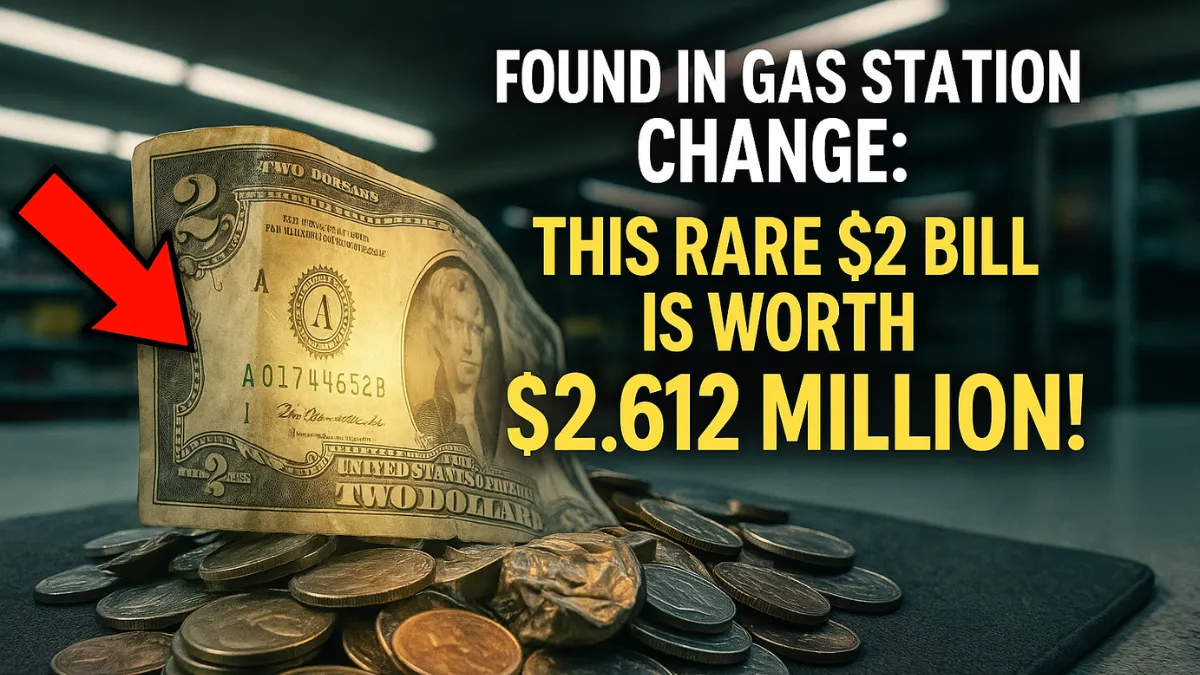Sometimes, the most valuable things are hiding in plain sight. Imagine stopping at a gas station, paying with cash, and getting a $2 bill as change—only to later discover it’s worth over $2.6 million. Sounds like a dream, right? But this incredible story proves it can happen.
A Simple Gas Station Stop Leads to a Shocking Discovery
In Texas, a regular customer bought gas and received a $2 bill in change. At first glance, it looked like any other note. But something about it stood out—it looked older and was in near-perfect condition. Instead of ignoring it, the customer showed it to a currency expert.
What happened next surprised everyone. The expert immediately recognized it as an incredibly rare $2 Treasury Note from 1890—a bill that collectors dream of owning.
Why This $2 Bill Is Worth Millions
This particular bill is part of a famous series known as the “Grand Watermelon” notes. These notes got their nickname because of the large round zeros on the back that look like watermelons. Most of these bills were destroyed long ago, and only a few remain today.
The condition of the bill and its unique serial number made it even more valuable. One similar note sold at auction for over $2 million, and experts believe this new find could be worth as much as $2.612 million—possibly more due to its perfect preservation.
Collectors Are Buzzing with Excitement
The rare find has caused a stir in the numismatic world (the community of people who collect old money). One collector compared the discovery to “winning the lottery without buying a ticket.”
Since the news broke, many Americans have started going through old drawers, checking scrapbooks, and digging into piggy banks—hoping to find a similar treasure.
$2 Bills: Rare, But Still Circulating
Yes, the U.S. government still prints $2 bills, but they aren’t used often. Many people think they’re odd or outdated, and some businesses even hesitate to accept them. Because of that, they tend to get saved, lost, or forgotten—rather than spent.
But older $2 bills, especially those from the 1800s or early 1900s, can be incredibly valuable—especially if they’re rare versions or in pristine condition.
What to Look For in Valuable $2 Bills
Not every $2 bill is worth a fortune, but some key features can boost their value:
- Rare series years (like 1890 or 1928)
- Uncirculated condition (no folds, creases, or marks)
- Unique serial numbers
- Printing errors
- Red seals or star notes
- Limited-run Treasury Notes
Collectors often pay a premium for any of these traits—and when multiple are combined in one bill, the value can skyrocket.
Final Thoughts: A Wallet Can Hold Hidden Riches
The story of the $2.612 million gas station find is a great reminder to pay attention to the money you handle. Most people use bills without thinking twice, but some of them could be rare pieces of American history.
So next time you get cash—whether it’s from a gas station, store, or even a vending machine—take a second look. That old $2 bill might be worth far more than face value.
Frequently Asked Questions (FAQs)
Q1: Is it really true a $2 bill worth $2.612 million was found in gas station change?
Yes, according to reports, a customer in Texas received a rare $2 bill from 1890 during a routine gas station stop. Experts later confirmed its value at over $2.6 million due to its rarity and condition.
Q2: What makes the “Grand Watermelon” note so special?
Its unique design (featuring large zeros on the back), rarity, limited printing, and collectible history make it one of the most valuable paper notes in U.S. currency.
Q3: Are all $2 bills valuable?
No, most modern $2 bills are only worth $2. However, older versions (especially those from the 1800s), red seal notes, star notes, or those with errors can be worth much more.
Q4: How can I tell if my $2 bill is worth more than face value?
Check the year, serial number, seal color, and condition. For a more accurate estimate, you can consult a professional currency dealer or get it appraised.
